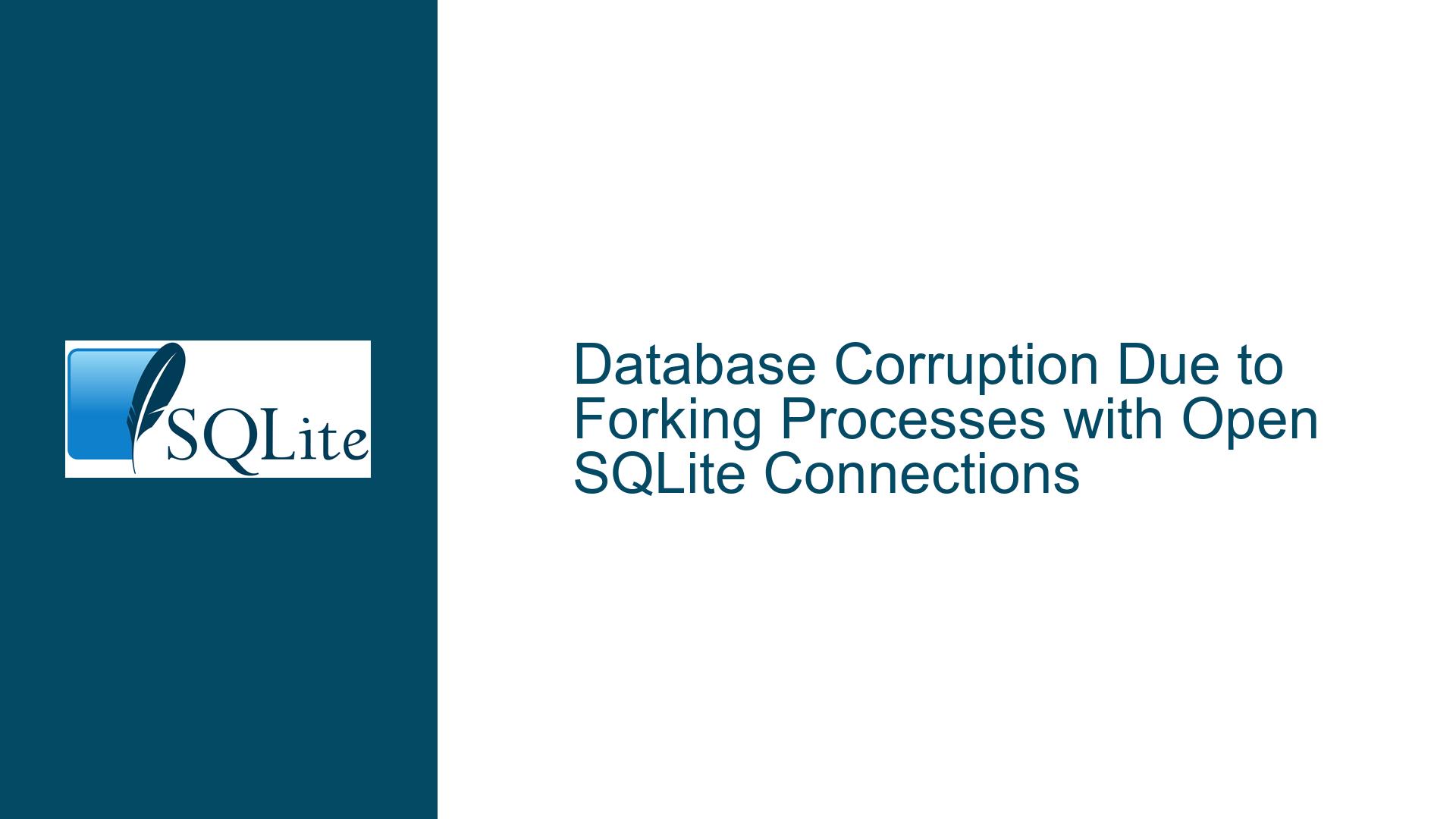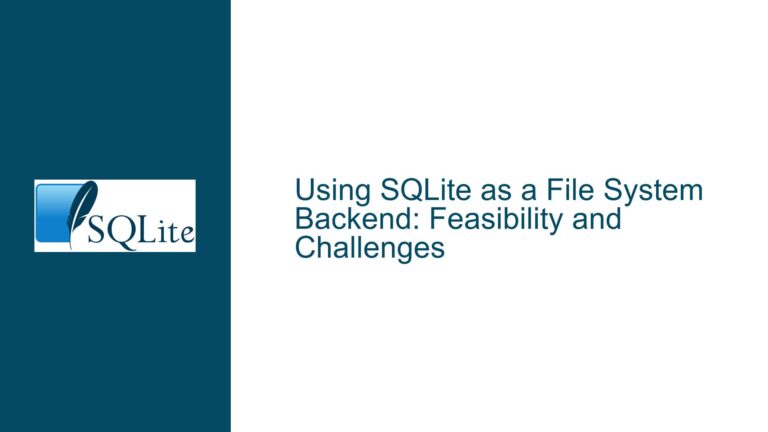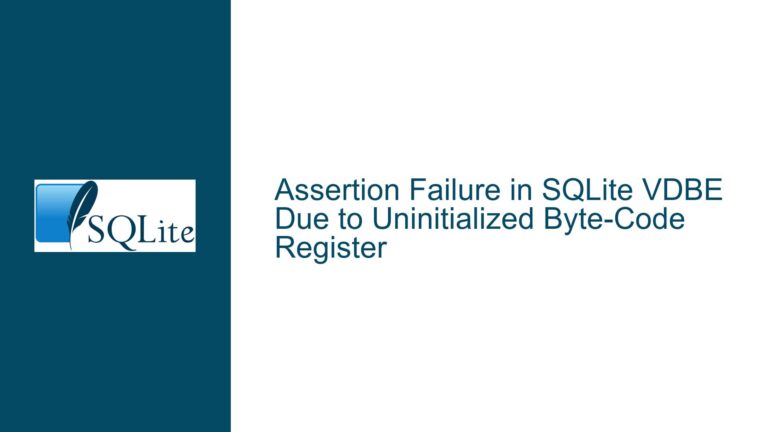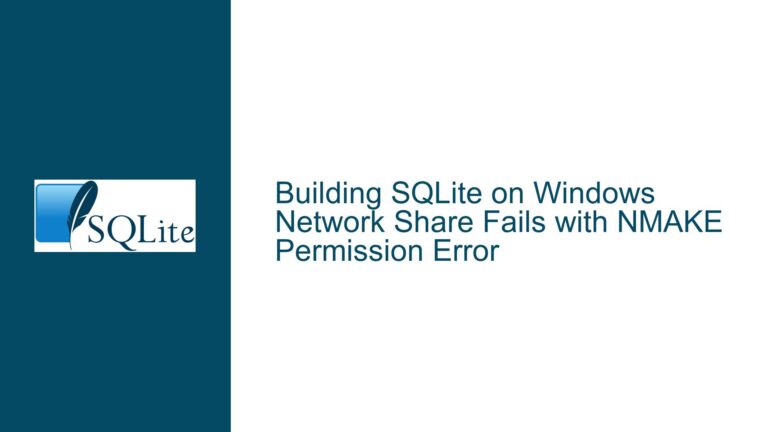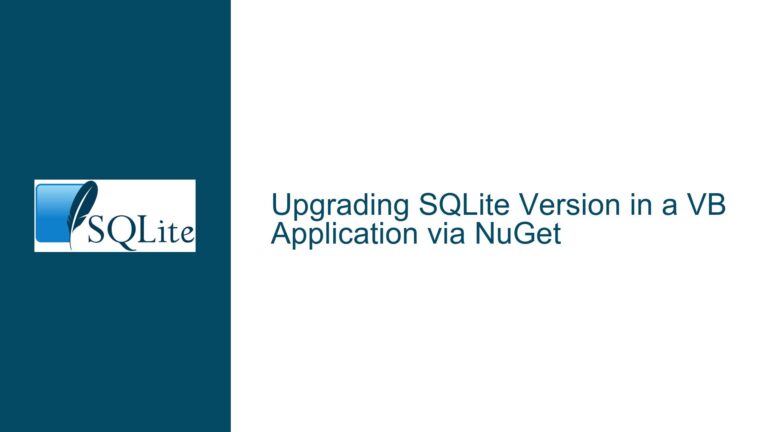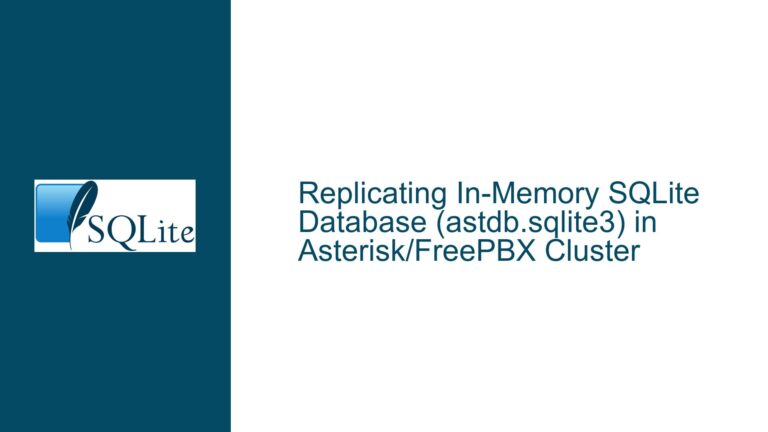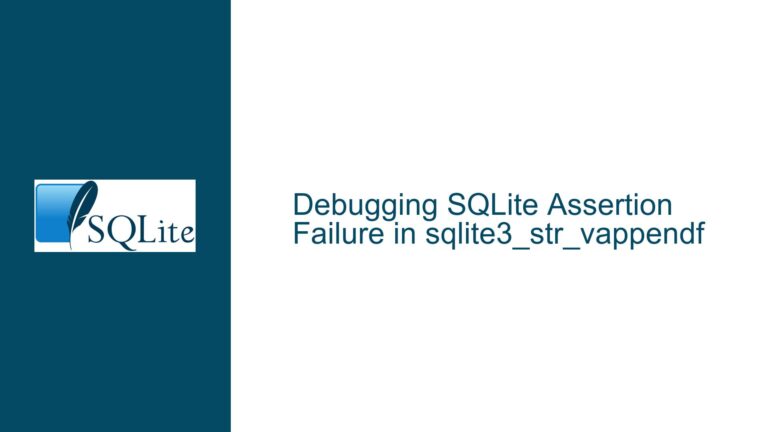Database Corruption Due to Forking Processes with Open SQLite Connections
Understanding Fork-Related Database Corruption Scenarios
SQLite database corruption stemming from improper process forking represents one of the most insidious failure modes in embedded database systems. This failure scenario occurs when an application opens a database connection, subsequently forks to create child processes, then continues using the inherited database handles across process boundaries. The SQLite documentation explicitly warns against this practice in section 2.6 of its corruption guide, yet real-world implementations continue encountering this issue due to subtle interactions between POSIX advisory locking semantics and modern application architectures.
At the core of this problem lies the fundamental mismatch between SQLite’s process-local locking assumptions and the memory duplication inherent in fork operations. When a parent process opens an SQLite database connection, it establishes file descriptors, cached page buffers, and synchronization primitives that maintain ACID guarantees within that single process context. The fork system call creates child processes with identical copies of these resources but no mechanism to coordinate their concurrent modification. Subsequent writes through these duplicated handles bypass SQLite’s transaction coordination mechanisms, leading to:
- Lock state desynchronization between processes sharing the same database file
- Double-mapped memory regions causing cache incoherency in WAL mode
- Race conditions in journal file handling during concurrent transaction commits
- Undefined behavior from inherited mutexes in SQLite’s internal synchronization structures
A critical case study emerged from a 2021 incident where daemonization logic invoked double-forking after database connection establishment. The child processes inherited open database handles but operated under the false assumption of exclusive access, leading to silent corruption through overlapping write operations. This scenario demonstrates how even single-threaded applications can trigger corruption through improper process management, particularly in service architectures employing daemonization patterns.
Mechanisms Leading to Fork-Induced Database Corruption
POSIX Advisory Lock Inheritance and Invalidations
SQLite relies on POSIX advisory locks to coordinate access between concurrent processes. When process A opens a database file, it acquires shared and exclusive locks that other SQLite-aware processes will respect through the same locking protocol. However, fork operations create child processes (B and C) that inherit identical file descriptors and lock states from parent A.
The catastrophic failure occurs because:
- Children B/C believe they hold valid locks identical to parent A
- POSIX locks aren’t actually inherited across fork – children start with clean lock state
- SQLite’s internal lock tracking (in the parent’s memory space) isn’t replicated to children
- Children proceed with write operations assuming uncontested access
This discrepancy leads to overlapping modifications that bypass SQLite’s journaling safeguards. The corruption manifests as:
- Page header mismatches between WAL-index and main database file
- Invalid schema cookies from partial transaction commits
- Cross-linked B-tree pages due to uncoordinated allocation
Daemonization-Specific Failure Modes
The double-fork daemonization pattern commonly used in Unix services creates particularly dangerous conditions:
int main() {
sqlite3* db;
sqlite3_open("app.db", &db); // Parent opens DB
pid_t pid = fork();
if (pid == 0) {
setsid(); // Create new session
pid_t pid2 = fork(); // Second fork
if (pid2 == 0) {
// Daemon process inherits parent's DB handle
sqlite3_exec(db, "INSERT ...", 0, 0, 0); // Danger!
}
}
}
Here, the final daemon process operates with a database handle whose:
- File descriptors point to the same underlying file
- Page cache contains stale data from parent’s pre-fork state
- Lock tracking structures don’t reflect actual kernel lock state
SQLITE_ENABLE_API_ARMOR Mitigation Gaps
While compiling with -DSQLITE_ENABLE_API_ARMOR helps detect invalid handle usage, current implementations (as of SQLite 3.37.2) lack comprehensive fork detection. The proposed pthread_atfork() handler approach would require:
- Pre-fork handler: Freeze all database connections
- Post-fork parent handler: Resume normal operations
- Post-fork child handler: Invalidate all inherited connections
However, this remains unimplemented in core SQLite due to:
- Portability challenges across non-pthreads environments
- Performance overhead from global connection tracking
- Edge cases in mixed VFS implementations
Comprehensive Solutions and Preventative Measures
Architectural Patterns for Safe Process Management
1. Strict Connection Lifecycle Separation
void daemonize() {
pid_t pid = fork();
if (pid != 0) exit(0); // Parent exits
setsid();
pid = fork();
if (pid != 0) exit(0); // Session leader exits
// New daemon process opens fresh DB connection
sqlite3* db;
sqlite3_open("app.db", &db);
// ... rest of daemon logic ...
}
Key principles:
- Zero open database handles before forking
- Fresh connections in each post-fork process
- No handle sharing across process boundaries
2. Connection Pool Isolation
For applications requiring pre-fork connection pools:
// Pre-fork initialization
sqlite3* create_pool(int size) {
// Open multiple connections upfront
}
void worker_process() {
// Reopen fresh connection despite pool existing in parent
sqlite3* db;
sqlite3_open("app.db", &db);
}
SQLite Configuration Hardening
Compile-Time Defenses
CFLAGS += -DSQLITE_ENABLE_API_ARMOR \
-DSQLITE_USE_FCNTL_TRACE \
-DSQLITE_DEFAULT_WAL_SYNCHRONOUS=1 \
-DSQLITE_ENABLE_UNLOCK_NOTIFY
Runtime Pragmas
PRAGMA locking_mode = EXCLUSIVE;
PRAGMA journal_mode = WAL;
PRAGMA synchronous = NORMAL;
PRAGMA wal_autocheckpoint = 1000;
Detection and Recovery Protocols
1. Post-Fork Validation Sequence
void post_fork_safety_checks(sqlite3* db) {
int rc = sqlite3_exec(db, "PRAGMA integrity_check", callback, 0, 0);
if (rc != SQLITE_OK) {
sqlite3_close(db);
reopen_and_recover();
}
rc = sqlite3_exec(db, "PRAGMA quick_check", callback, 0, 0);
// Additional consistency checks...
}
2. WAL File Monitoring
# Monitor WAL file size and age
inotifywait -m -e close_write app.db-wal | while read; do
if [ $(stat -c%s app.db-wal) -gt 1048576 ]; then
sqlite3 app.db "PRAGMA wal_checkpoint(TRUNCATE)"
fi
done
Debugging Techniques for Fork-Related Corruption
1. Lock State Tracing
#define SQLITE_FCNTL_TRACE 0x80000000
sqlite3_file_control(db, NULL, SQLITE_FCNTL_TRACE, (void*)1);
Generates debug output showing real lock operations vs SQLite’s internal state.
2. File Descriptor Inheritance Auditing
void verify_fd_ownership(sqlite3* db) {
int fd = -1;
sqlite3_file_control(db, NULL, SQLITE_FCNTL_FILE_POINTER, &fd);
if (fcntl(fd, F_GETFD) & FD_CLOEXEC) {
// FD marked close-on-exec - safe
} else {
// Potential inheritance risk
}
}
3. Process Lineage Tracking
Embed process metadata in temporary tables:
ATTACH DATABASE '' AS forkcheck;
CREATE TABLE forkcheck.procinfo AS
SELECT getpid() AS pid,
sqlite3_source_id() AS build,
random() AS nonce;
Periodically verify PID matches original process.
This comprehensive analysis demonstrates that while SQLite provides robust corruption protections under normal use, proper process management remains critical in fork-heavy environments. By combining architectural discipline with defensive configuration and runtime verification, developers can eliminate this class of database corruption entirely.
